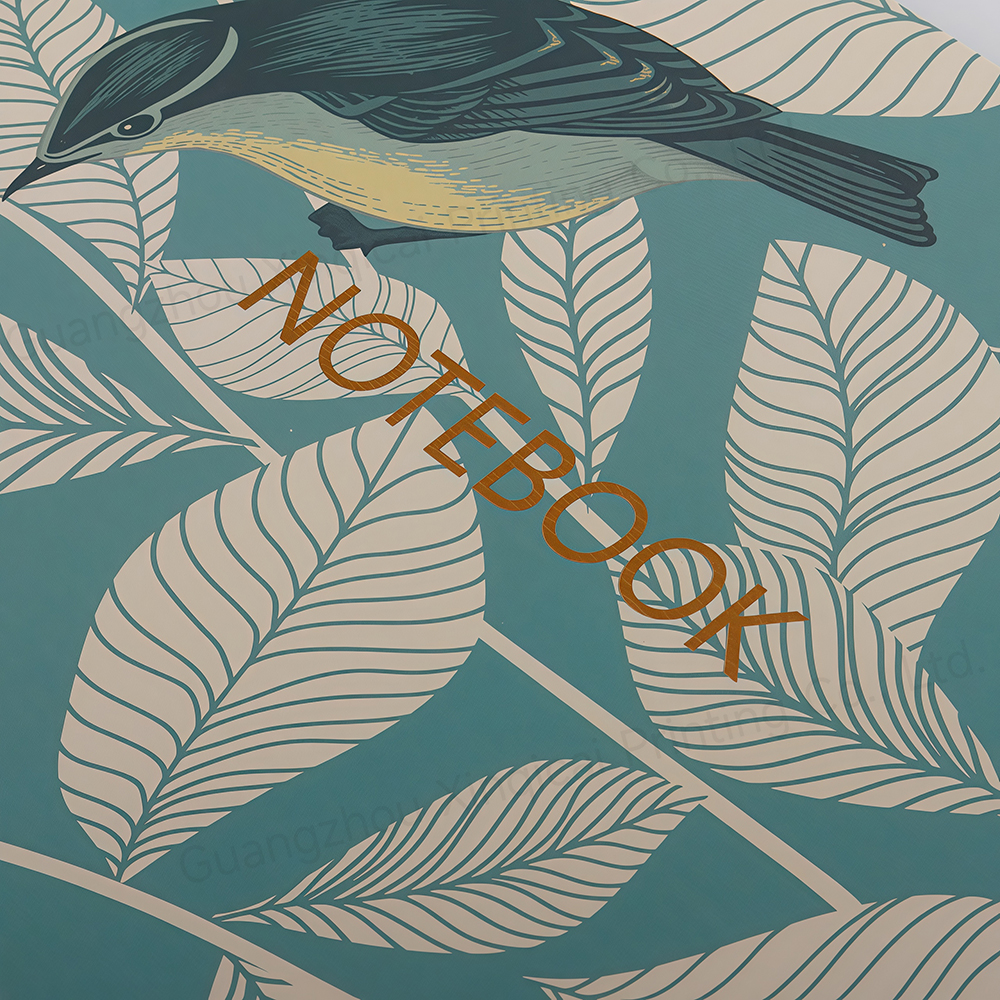Among everyday office supplies, notebooks are arguably one of the most frequently used.
Many businesses, governments, and schools also want to print their own unique notebooks with their own logos, but they're often unsure about the right size and paper type.
Today, we'll briefly introduce the basics of notebook printing and the characteristics of various leather materials for custom notebooks.

Common Notebook Printing Dimensions
Size 1: 16K - Cover (270*210mm) - Inner Size (258*188mm)
Size 2: 24K - Cover (235*175mm) - Inner Size (210*190mm)
Size 3: 32K - Cover (218*154mm) - Inner Size (208*144mm)
Size 4: 48K - Cover (187*122mm) - Inner Size (170*97mm)
Size 5: 56K - Cover (145*105mm) - Inner Size (128*83mm)
Common Binding Styles
Notebook binding styles include softcover, loose-leaf, coil, and hardcover. Tips: For text typesetting documents and short-run, low-quality printing, paper plates (zinc oxide plates) can be used for light printing. This reduces plate fees, printing costs, time, and efficiency.
In addition, printing companies primarily use offset paper and writing paper when printing notebooks.
Characteristics of Various Leather Materials for Custom Notebooks
There are many types of leather. Using different raw hides and tanning methods, leathers suitable for various applications can be created. Common leathers used for genuine leather products have the following characteristics:
Characteristics of Cowhide Leather
Cowhide leather includes ox leather, yak leather, and buffalo leather.
Ox leather has a fine grain, thick cortex, high strength, fullness, and good elasticity, resulting in products that are beautiful, comfortable, and durable. Ox leather is primarily used in clothing, shoes, luggage, and ball products.
Yak leather has a slightly lower grain than ox leather, but its other properties and uses are generally similar.
Buffalo leather has a rough surface and loose fibers. Its strength is slightly lower than that of cattle leather, but its other properties are similar to those of cattle leather. Buffalo leather is primarily used for sofas, bags, and is also commonly used in leather shoes.
Characteristics of Pig Leather
Pig leather differs significantly from cattle and sheep leather, primarily in its rough grain, dense and full fibers, and lacks elasticity. However, its strength is similar to that of cattle leather and stronger than that of sheep leather, making its products durable but less aesthetically pleasing.
Pig leather can be used to make a variety of leather products.
Characteristics of Sheep Leather
Sheep leather is divided into goat leather and sheep leather.
Goat leather has a fine, beautiful grain and excellent softness, but its durability is lower than that of cattle leather. Goat leather products are beautiful and comfortable, but their surface abrasion resistance and durability are average. Goat leather is primarily used in high-end women's leather shoes, clothing, gloves, and handbags.
Sheep leather is more flexible than goat leather, but its durability is not as good as that of goat leather. Sheep leather products are more aesthetically pleasing and comfortable to wear, but they lack durability. Sheep leather is primarily used in clothing and gloves, but is also used in high-end leather shoes and soft bags.
Characteristics of Full-Grain Leather
Full-grain leather refers to leather that retains the natural appearance of the animal hide (the hair-bearing side), also known as face leather. Some full-grain leathers are used unfinished, but most undergo a cosmetic finish.
Full-grain leather requires high-quality raw hides with minimal damage and high processing requirements, making it a premium leather. Because the surface of the raw hide remains intact, it exhibits excellent durability. Generally, full-grain leather is unfinished or has a very thin coating, preserving its softness and excellent breathability. The grain of the genuine leather is used to create a natural look, making it comfortable and aesthetically pleasing.
Full-grain leather is often dyed, so the industry generally refers to leather with dye as the primary colorant in the coating as aniline leather (or full aniline leather). This type of leather is evenly dyed and has a distinct grain. It's finished without any concealing film-forming substances, leaving the grain completely intact. After finishing, only a thin, colorless, transparent layer remains, allowing the natural grain to be clearly visible.
Full-grain leather is used for all high-end leather goods. When cleaning and caring for this type of genuine leather, care should be taken to preserve its unique style and feel.
Characteristics of Semi-aniline Leather
This type of leather has some shallow scratches on the grain surface. To cover these scratches while preserving the natural grain, the leather is lightly sprayed with a small amount of pigment, adhesive, and dye. This creates a thin, semi-hidden layer, leaving the grain subtly visible.

